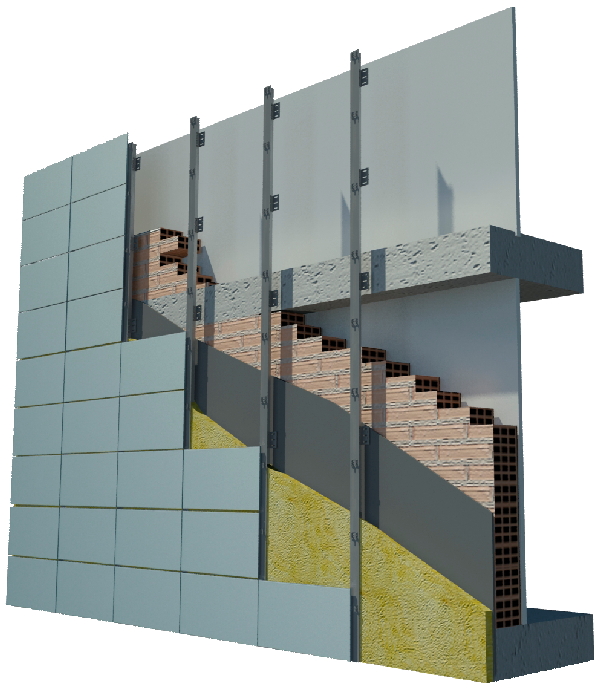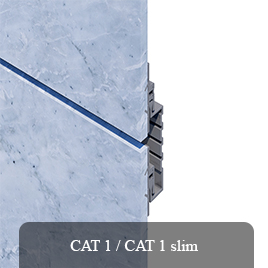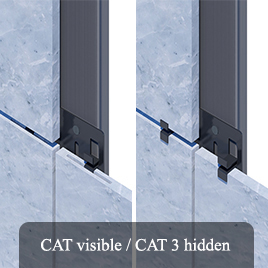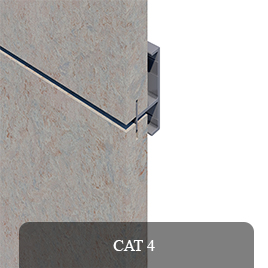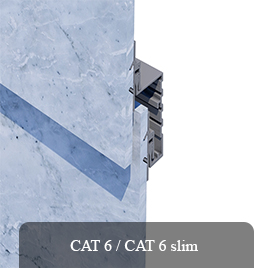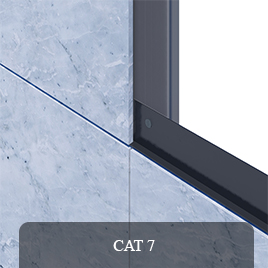Systems
Ventilated Façades
The concept of Ventilated Façade refers to a construction solution that allows the exterior of a façade to be clad with different types of materials. Its main function is to provide a second skin to the building envelope, improving its technical performances.
A ventilated façade is created by fixing a rigid cladding to the original closing wall, leaving an air chamber betweem them. That way, the ventilated façade can transfer its own loads and wind actions. The resulting cavity is open at strategic points —usually at the joints— to allow ventilation. This chamber improves the performance of the building by largely preventing dampness and condensation, and improves the stability of the whole building, thus prolonging its service life.
In addition, a ventilated façade allows the installation of a thermally conductive insulation, which increases energy savings.
Basically, its installation consists of placing a secondary structure (the system for fixing the tiles)anchored to the original wall of the building.
ADVANTAGES OF VENTILATED FACADE
- PROTECTION AGAINST RAINWATER.
Prevents internal condensations and the appearance of damp and efflorescence.
- ENERGY SAVING.
Saves between 25% and 30%. Avoids termal bridges.
- PROTECTION AGAINST SOLAR RADIATION.
Reduces termal expansion.
- ACCOUSTIC INSULATION.
Reduces noise up to 10%.
- QUICK AND EASY REFURBISHMENTS.
Corrects slopes to achieve a perfect flatness. Eliminates the need to renovate the existing façade.
